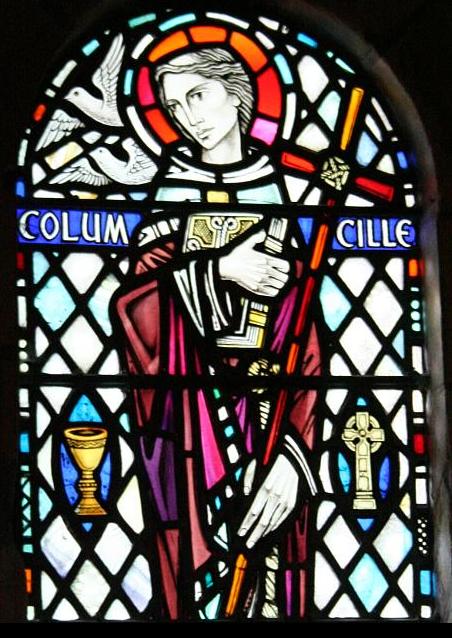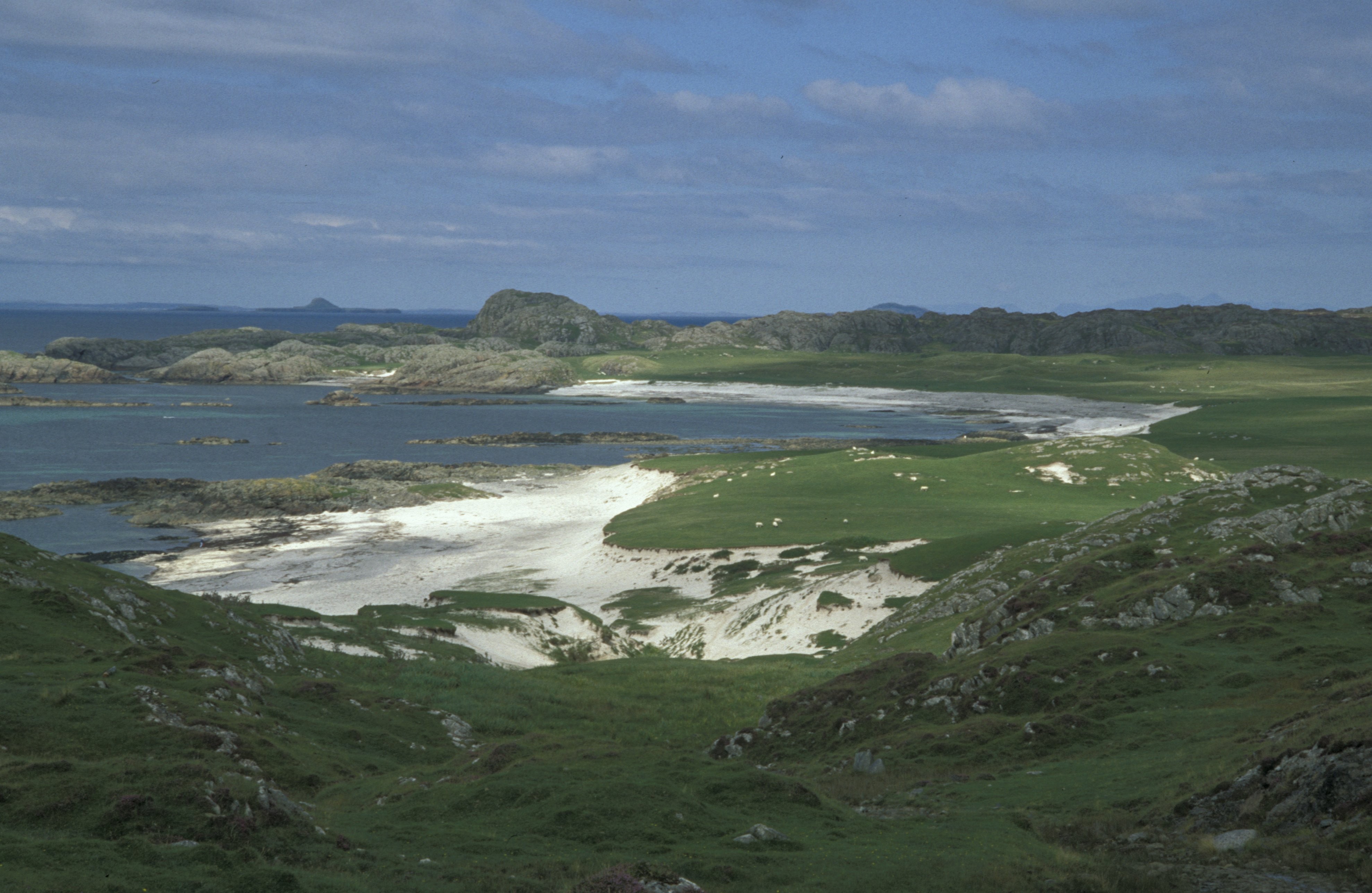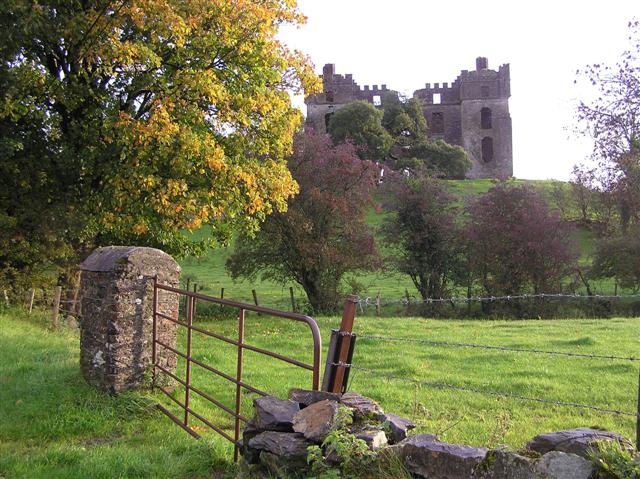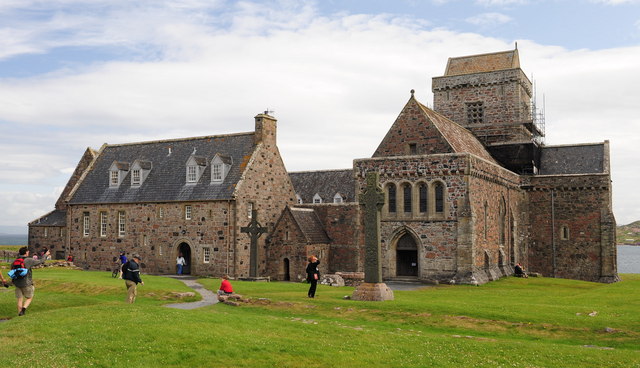|
Adomnán
Adomnán or Adamnán of Iona (; , ''Adomnanus''; 624 – 704), also known as Eunan ( ; from ), was an abbot of Iona Abbey ( 679–704), hagiographer, statesman, canon jurist, and Christian saint, saint. He was the author of the ''Life of Columba'' (), probably written between 697 and 700. This biography is by far the most important surviving work written in early-medieval Scotland, and is a vital source for our knowledge of the Picts, and an insight into the life of Iona and the early-medieval Gaels, Gaelic monk. Adomnán promulgated the Cáin Adomnáin, Law of Adomnán or "Law of Innocents" (). He also wrote the treatise ('On Holy Places'), an account of the great Christian holy places and centres of pilgrimage. Adomnán got much of his information from a Franks, Frankish bishop called Arculf, who had personally visited Egypt, Rome, Constantinople and the Holy Land, and visited Iona afterwards. Life Adomnán was born about 624, a relative on his father's side of Col ... [...More Info...] [...Related Items...] OR: [Wikipedia] [Google] [Baidu] [Amazon] |
Cáin Adomnáin
The ''Cáin Adomnáin'' (, , "Law of Adomnán"), also known as the ''Lex Innocentium'' (Law of Innocents), was promulgated amongst a gathering of Gaels, Gaelic and Picts, Pictish notables at the Synod of Birr in 697 in Ireland, 697. It is named after its initiator Adomnán of Iona, ninth Abbot of Iona after St. Columba. It is called the "Geneva Accords" of the ancient Irish and Europe's first human rights treaty, for its protection of women and non-combatants, extending the Law of Patrick, which protected monks, to civilians. The legal symposium at the Synod of Birr was prompted when Adomnáin had an Aisling dream vision wherein his mother excoriated him for not protecting the women and children of Ireland. History During almost two centuries, and more precisely the years AD 697–887, nine different ordinances were promulgated and kept in the record of the annals of Ireland. Each ordinance was issued either by a saint or monastic group. Three texts of these legislations have ... [...More Info...] [...Related Items...] OR: [Wikipedia] [Google] [Baidu] [Amazon] |
Life Of Columba
The ''Life of Columba'' () is a hagiography recounting the life of Columba, the founder of Iona Abbey, written a century after Columba's death by Adomnán, one of his successors as Abbot of Iona. Adomnán (also known as Eunan), served as the ninth Abbot of Iona until his death in 704. James Earle Fraser asserts that Adomnán drew extensively from an existing body of accounts regarding the life of Columba, including a Latin collection entitled ''De uirtutibus sancti Columbae'', composed c. 640 A.D. This earlier work is attributed to Cummene Find, who became the abbot of Iona and served as the leader of the monastic island community from 656 until his death in 668 or 669 A.D. While the ''Vita Columbae'' often conflicts with contemporaneous accounts of various battles, figures, and dates, it remains the most important surviving work from early medieval Scotland and provides a wealth of knowledge regarding the Picts and other ethnic and political groups from this time period. The Vit ... [...More Info...] [...Related Items...] OR: [Wikipedia] [Google] [Baidu] [Amazon] |
Picts
The Picts were a group of peoples in what is now Scotland north of the Firth of Forth, in the Scotland in the early Middle Ages, Early Middle Ages. Where they lived and details of their culture can be gleaned from early medieval texts and Pictish stones. The name appears in written records as an Exonym and endonym, exonym from the late third century AD. They are assumed to have been descendants of the Caledonians, Caledonii and other northern British Iron Age, Iron Age tribes. Their territory is referred to as "Pictland" by modern historians. Initially made up of several chiefdoms, it came to be dominated by the Pictish kingdom of Fortriu from the seventh century. During this Fortriu#Verturian_hegemony, Verturian hegemony, ''Picti'' was adopted as an endonym. This lasted around 160 years until the Pictish kingdom merged with that of Dál Riata to form the Kingdom of Alba, ruled by the House of Alpin. The concept of "Pictish kingship" continued for a few decades until it was ab ... [...More Info...] [...Related Items...] OR: [Wikipedia] [Google] [Baidu] [Amazon] |
Arculf
Arculf was a Frankish churchman who toured the Holy Land around 670. Bede claimed he was a bishop from Gaul (). According to Bede's ''Ecclesiastical History of the English People'' (V, 15), Arculf was shipwrecked on the shore of Iona on his return from his pilgrimage. He was hospitably received by Adomnán, the abbot of the island monastery from 679 to 704, to whom he gave a detailed narrative of his travels. Adomnán, with aid from some further sources, was able to produce '' De Locis Sanctis'' ("on the sacred places"), a descriptive work in three books dealing with Jerusalem, Bethlehem, other sites in the Holy Land, and briefly with Alexandria and Constantinople Constantinople (#Names of Constantinople, see other names) was a historical city located on the Bosporus that served as the capital of the Roman Empire, Roman, Byzantine Empire, Byzantine, Latin Empire, Latin, and Ottoman Empire, Ottoman empire .... Many details about Arculf's journeys can be inferred from this text ... [...More Info...] [...Related Items...] OR: [Wikipedia] [Google] [Baidu] [Amazon] |
Roman Catholic Diocese Of Raphoe
:''See Diocese of Derry and Raphoe for the Anglican (Church of Ireland) counterpart'' The Diocese of Raphoe ( ; ; ) is a Latin Church ecclesiastical territory or diocese of the Catholic Church in County Donegal in Ulster, Ireland. It is one of eight suffragan dioceses in the inter-Irish primatial ecclesiastical province of the metropolitan Archdiocese of Armagh.Archdiocese of Armagh Retrieved on 16 January 2009. On 9 June 2017, was appointed and was ordained to the episcopate on 5 August 2017. History * Estab ...[...More Info...] [...Related Items...] OR: [Wikipedia] [Google] [Baidu] [Amazon] |
Northern Uí Néill
The Northern Uí Néill was any of several dynasties in north-western medieval Ireland that claimed descent from a common ancestor, Niall of the Nine Hostages. Other dynasties in central and eastern Ireland who also claimed descent from Niall are termed the Southern Uí Néill (together they are known as the Uí Néill dynasty). The dynasties of the Northern Uí Néill were the Cenél Conaill and Cenél nEógain, named after the two most powerful sons of Niall: Conall Gulban, Conall and Eógan mac Néill, Eógain. The Northern Uí Néill's over-kingdom in its earliest days was known as In Fochla and In Tuaiscert, both meaning 'the North', and was initially ruled by the Cenél Conaill. After the Cenél nEógain's rise to dominance, it became known as Ailech. Mythical origins It is claimed in medieval Irish texts that around 425, three sons of Niall Noígiallach — Eoghan, Conal Gulban, and Enda — along with Erc, a son of Colla Uais, and his grandchildren, invaded north-western ... [...More Info...] [...Related Items...] OR: [Wikipedia] [Google] [Baidu] [Amazon] |
Iona
Iona (; , sometimes simply ''Ì'') is an island in the Inner Hebrides, off the Ross of Mull on the western coast of Scotland. It is mainly known for Iona Abbey, though there are other buildings on the island. Iona Abbey was a centre of Gaelic monasticism for three centuries and is today known for its relative tranquility and natural environment. It is a tourist destination and a place for spiritual retreats. Its modern Scottish Gaelic name means "Iona of (Saint) Columba" (formerly anglicised as "Icolmkill"). In 2019, Iona's estimated population was 120. In March 1980, the Hugh Fraser Foundation donated much of the main island (and its off-lying islands) to the current owner, the National Trust for Scotland. The abbey and some church buildings are owned by the Iona Cathedral Trust. One publication, describing the religious significance of the island, says that the island is "known as the birthplace of Celtic Christianity in Scotland,” and notes that “St Columba came here ... [...More Info...] [...Related Items...] OR: [Wikipedia] [Google] [Baidu] [Amazon] |
Raphoe
Raphoe ( ; ) is a small town in County Donegal in the north-west of Ulster, the northern province in Ireland. It is the main town in the fertile district of East Donegal known as the Laggan. It gave its name to the Barony of Raphoe, which was later divided into the baronies of Raphoe North and Raphoe South, as well as to the Roman Catholic Diocese of Raphoe and the Church of Ireland (Anglican) Diocese of Derry and Raphoe. There is also a civil parish of Raphoe.Placenames Database of Ireland (see archival records) The Burn Dale (also known in English as the Burn Deele) is a '''' (a small river) that flows a short dist ... [...More Info...] [...Related Items...] OR: [Wikipedia] [Google] [Baidu] [Amazon] |
Raphoe Cathedral
St Eunan's Cathedral ( , also known as Raphoe Cathedral, is one of two cathedral churches of the United Dioceses of Derry and Raphoe (united in 1834) in the Church of Ireland. It is located in Raphoe, County Donegal and is dedicated to Saint Eunan (Adomnán of Iona) (627/8 – 704) who was abbot of Iona (679–704). The other diocesan cathedral is St Columb's Cathedral in Derry. History The oldest substantive part of the present building is the south-east corner, which dates back to the 12th century, although two pieces of a sculptured door lintel dating from around the 9th century are believed to be from the original monastery and church of Raphoe, as founded by St Eunan. The rest of the cathedral is a mixture of successive rebuilding and alterations dating from the 17th to late 19th centuries. The original building was cruciform in shape. A virtual re-building of the medieval cathedral was directed by The Rt. Rev. Dr. George Montgomery from around 1605. Montgomery had be ... [...More Info...] [...Related Items...] OR: [Wikipedia] [Google] [Baidu] [Amazon] |
Iona Abbey
Iona Abbey is an abbey located on the island of Iona, just off the Isle of Mull on the West Coast of Scotland. It is one of the oldest History of early Christianity, Christian religious centres in Western Europe. The abbey was a focal point for the spread of Christianity throughout Scotland and marks the foundation of a monastic community by Columba, St. Columba, when Iona was part of the Kingdom of Dál Riata. Aidan of Lindisfarne, Saint Aidan served as a monk at Iona, before helping to reestablish Christianity in Northumberland, on the island of Lindisfarne. In the 12th century, the Macdonald lords of Clan Donald made Iona the ecclesiastical capital of the Royal Family of Macdonald, and subsequent Lords of the Isles into the early 16th century endowed and maintained the abbey, church and nunnery. Two of the Macdonalds (each named Angus) became Bishops of the Isles with the bishop's seat at Iona. St. Oran's chapel was the burial place for the Lords as evidenced by their gra ... [...More Info...] [...Related Items...] OR: [Wikipedia] [Google] [Baidu] [Amazon] |
Cenél Conaill
Cenél is a surname. Notable people with the surname include: *Cenél Conaill, the name of the "kindred" or descendants of Conall Gulban, son of Niall Noígiallach defined by oral and recorded history *Cenél nEógain (in English, Cenel Eogan) is the name of the "kindred" or descendants of Eógan mac Néill, son of Niall Noígiallach who founded the kingdom of Tír Eógain in the 5th century *Kin groups forming part of Dal Riata, most of which, after a varied evolution eventually became the Scottish region of Argyll **Cenél nÓengusa, a kin group who ruled the island of Islay, and perhaps nearby Colonsay. After spending 4 centuries Scandinavian Scotland, as part of Norway, and another 4 as part of the quasi-independent Lord of the Isles, Lordship of the Isles, this region became Scottish in the late 15th century. ** Cenél nGabráin, the "kindred" of Gabrán, who ruled Kintyre, Knapdale (at that time including the lands between Loch Awe and Loch Fyne - Craignish, Ardscotnish, River ... [...More Info...] [...Related Items...] OR: [Wikipedia] [Google] [Baidu] [Amazon] |
Holy Land
The term "Holy Land" is used to collectively denote areas of the Southern Levant that hold great significance in the Abrahamic religions, primarily because of their association with people and events featured in the Bible. It is traditionally synonymous with what is known as the Land of Israel ( Zion) or the Promised Land in a biblical or religious context, or as Canaan or Palestine in a secular or geographic context—referring to a region that is mostly between the Mediterranean Sea and the Jordan River. Today, it chiefly overlaps with the combined territory of the modern states of Israel and Palestine. Most notable among the religions that tie substantial spiritual value to the Holy Land are Judaism, Christianity, and Islam. A considerable part of the Holy Land's importance derives from Jerusalem, which is regarded as extremely sacred in and of itself. It is the holiest city in Judaism and Christianity and the third-holiest city in Islam (behind Mecca and Medina in ... [...More Info...] [...Related Items...] OR: [Wikipedia] [Google] [Baidu] [Amazon] |







